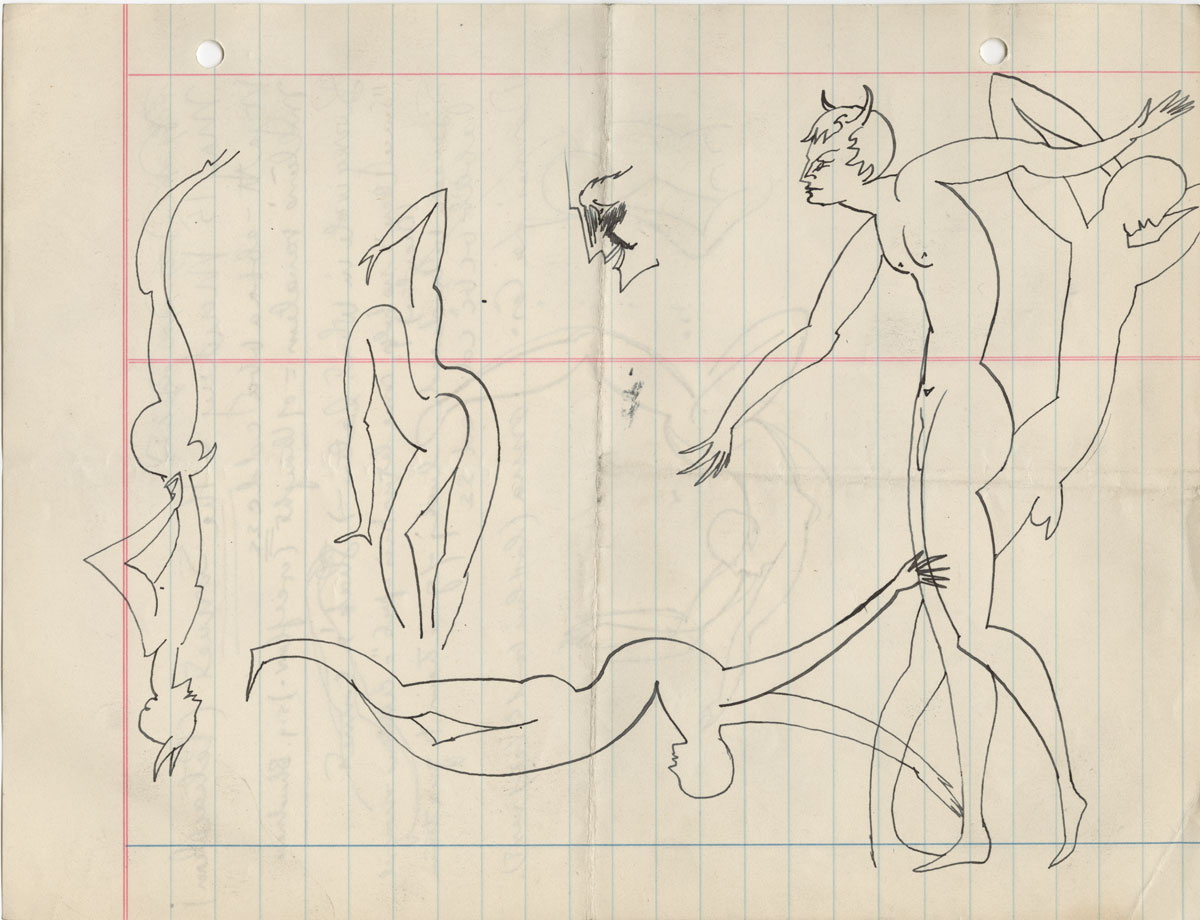
It’s spring: the “mud-luscious”’ and “puddle-wonderful” season whistled in by E. E. Cummings’s most famous poetic creature. He is the little, lame, queer, old man selling balloons: “the goat-footed balloonMan.”
The goat foot is the telling detail. It marks this seller of balloons as an incarnation of Pan, the Greek god of shepherds and the pastoral realm, or else as one of the lustful satyrs or mischievous fauns who were Pan’s closest companions. These are the inhabitants of the pagan realm of the goat-footed.
As an undergraduate at Harvard University in the 1910s, Cummings majored in Greek and English literature. The E. E. Cummings collection at the Harry Ransom Center includes many of Cummings’s papers from his Harvard years, including course notes, early notebooks full of poetic composition and experimentation, and translations which Cummings himself wrote from Classical texts. These papers give us a direct insight into Cummings’s classicism and his Pan-centric paganism.

Cummings went through an adolescent phase of moralizing exhortation, which he himself later characterized, in his autobiographical i: six nonlectures, as artistically disastrous. In juvenilia at the Ransom Center, we find him attempting to resist the lure of Pan and his satyrs: “Not the loud lusting of a bestial Pan / For naked nymph,- no, no, a mans pure love.” The moralizing phase did not last, and we soon find him embracing the paganism of “the great goat-footed God of all out-doors” along with fin-de-siècle Decadence and the poetry of A. C. Swinburne and Oscar Wilde.
The Decadent poets self-consciously cultivated an “over-ripe,” luxurious style, through which they evoked a mood of late paganism and Classical decline. Swinburne celebrated pagan sensualities ranging from Sapphic lesbianism to Bacchic revelry. Swinburne’s poetry helped Cummings to find a release from his own repressive upbringing and freed his pagan imagination.
Cummings’s juvenilia do not have the literary merit of his published work, but these papers are an invaluable resource for setting his published corpus in context. Cummings had a profound relationship to the Classical world. However, his published poetry often summons this relationship obliquely—as with the single detail of the balloonman’s goat-footedness. The more we understand the classicizing world of Cummings and his Harvard literary circle, the more we can relish the richness of his poetry and its oblique relationship to his love of the Classical past.
Dr. J. Alison Rosenblitt, Lecturer in Ancient History and Director of Studies in Classics at Regent’s Park College, University of Oxford, visited the Ransom Center during the spring of 2016 to do research for her book E. E. Cummings’ Modernism and the Classics: Each Imperishable Stanza (Oxford University Press, September 2016). Rosenblitt’s research was supported by the Frederic D. Weinstein Memorial Fellowship.
Receive the Harry Ransom Center’s latest news and information with eNews, a monthly email. Subscribe today.